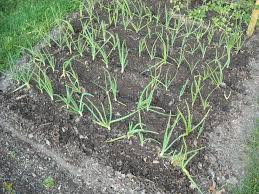This vegetarian curry is yummy, and tastes even better the day after making. Its low GI too.
Ingredients
9oz / 250 g chickpeas (if dry then soaked overnight)
225 g / 8 oz washed spinach
1 cauliflower, broken into florets
400g chopped tomatoes (tinned)
2 large onions, chopped
3 garlic cloves, chopped
2 tablespoons olive oil
2 litres / 3.5 pints water
2.5 cm piece ginger
2 crushed cardamoms
2 chillies, deseeded and finely sliced
1 tablespoon chopped mint
2 tablespoons chopped coriander
4 whole cloves
1 teaspoon black peppercorns
1 teaspoon toasted cumin seeds
1 teaspoon garam masala
1 teaspoon cinnamon
1 teaspoon turmeric
2 bay leaves
Method
Place the chickpeas, ginger, bay leaves, half the onions and the cinnamon stick in a saucepan with the water and simmer gently for 2 hours. Drain, set aside the chickpeas, reserve the liquid and discard the ginger, bay and cinnamon.
 Heat the olive oil in a pan and cook the onions and garlic until softened but not yet coloured. Add the turmeric and chillies and cook for a further 3 minutes. Add the tinned tomatoes and half the cooking liquid and bring to the boil.
Heat the olive oil in a pan and cook the onions and garlic until softened but not yet coloured. Add the turmeric and chillies and cook for a further 3 minutes. Add the tinned tomatoes and half the cooking liquid and bring to the boil.Place the cinnamon, cardamoms, cloves, peppercorns and cumin in a muslin or cheesecloth and add to the tomatoes. Bring to a simmer, add the cauliflower and cook for 20 minutes.
Add the spinach and cook until wilted. Add the chickpeas and simmer for a further 15 minutes. Add some of the reserved liquid to the pan as required. Remove the cheesecloth spices and stir in the garam masala, mint and coriander,
For related articles click onto:
Artichokes Alla Romana
Beef stroganoff
Butternut squash with leek and stilton
Cheese and ham pancakes
Chicken fried rice
Chicken stir fry
Chicken supreme
Chicken risotto recipe
Dauphinoise potatoes
Feta and nut stuffed peppers
GI Diet - Carrot and pineapple cake
GI Diet - Falafal
GI Diet - Fruit and vegetables
GI Diet - Dairy foods
GI Diet - Food and Diet
GI Diet - Low GI Foods
GI Diet - Porridge with berries
GI Diet - Vegetable pizza
GI Diet - Smoked salmon and cottage cheese sandwich
Pumpkin Risotto recipe
Recipe for cauliflower cheese
Recipe for Italian tomato sauce
Recipe for lasagna
Recipe for Quiche Lorraine
Recipe for pea salad with mint
Recipe for Salmon with lemon and herbs
Recipe Spaghetti bolognese
Recipe for tomato soup








